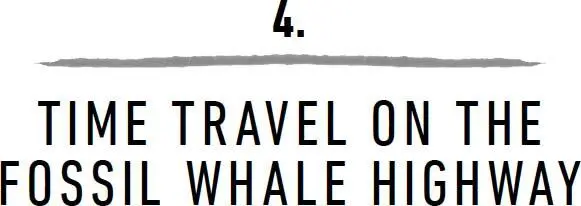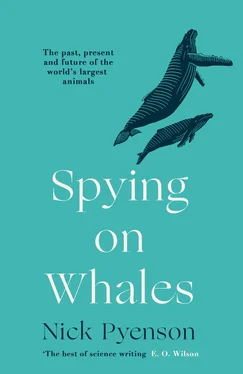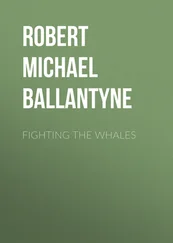The search for true causes—especially in the evolutionary sciences—is usually not as conclusive as the search for patterns and their data. Hows are much more forthcoming than whys. For whale origins, multiple explanations for their reentrance abound: they returned to escape predators on land; to take advantage of more prey at sea; to seize new habitats unexploited by any major marine predator since the demise of gigantic marine reptiles at the end of the Cretaceous, about twenty million years prior. Each one of these explanations is plausible but difficult to test. Maybe we’ll one day refine those explanations into a hypothesis with a prediction that we can evaluate, perhaps using the geologic context of these early whales, comparisons of their osteology with those of marine reptiles, or a novel analytical tool. One thing for sure: we will certainly benefit from more fossils—so we should keep looking.
Every scrap of fossilized bone found in the field may be novel, but they’re not all precious. There’s always some decision making about whether any particular fossil should be collected in the first place. It is, really, all about the questions at hand and how any certain fossil find can help answer it. Bonebeds are like caches of evidence: areas rich with clues, either because of the density of remains contained within them, as at Sharktooth Hill, or because of the completeness of the specimens in a given space, as at Wadi Al-Hitan. One fossil find can tell us about that individual, but it also captured a snapshot of a real ecological interaction, lost in geologic time. That’s an important detail from life in the distant geologic past, especially when we want to know the details of not merely the anatomy or evolutionary relationships of extinct organisms, but the food webs and ecosystems in which they lived millions of years ago. Finding these kinds of paleontological caches is thrilling, and it can also be overwhelming, as I would soon find out for myself.

Imagine floating above the great tapered tail of South America from space, seeing it stripped of clouds, ice, soil, and water so that the geologic world beneath is made visible. The familiar outline of the continent rises in stark, jagged relief. The high spine of the Andes is draped in red and gray bands to the east, toward Argentina, and ochers and sands cover Chile to the west. From this vantage, the cone of South America is locked in by a jigsaw puzzle of oceanic plates, and a surprisingly deep, dark cut mars its western boundary.
This incision marks the border between the Nazca and South American tectonic plates, where the lip of the former inexorably and slowly rolls under the edge of the latter. This action uplifts what was once seafloor, carrying ancient organisms buried in it—extinct whales included—slowly to dry land on the western edge of South America. This tectonic motion, called subduction, eventually yields mountain chains like the Andes over geologic time. But at the scale of human lifetimes, subduction can cause megathrust earthquakes that convulse entire cities, maroon fishing boats, and kill thousands in a span of seconds.
In 1835 a young Charles Darwin observed the outcome of this very process along the coast of Chile, near Concepción. Three years into its round-the-world voyage, the HMS Beagle had rounded the horn of Tierra del Fuego and made its way up the west coast of South America. Darwin was ashore when the earthquake started. A crescendo over the course of hours allowed most of the residents of Concepción to flee and limited the scope of fatalities to a few dozen people. Aftershocks rattled terrified locals for several days thereafter. Darwin later surveyed the devastation in Concepción firsthand, noting that most of the city was flattened, burned, or flooded by an accompanying tsunami—and that the entire shoreline of the harbor had risen several feet, stranding limpets and starfish. Darwin surmised that these catastrophic effects were connected with the volcanic eruptions he had observed during earlier forays hundreds of miles south near Chiloé. Darwin suspected that volcanic eruptions, the sudden uplift of coastlines, earthquakes, and tsunamis were linked by a common underlying mechanism. His intuitive guess was more right than he could have known; they are all consequences of subduction—the jerky slippage of great masses of tectonic plates against one another—and the central process that underpins the idea of plate tectonics.
Plate tectonics is a very young idea about how the Earth works. Until the late twentieth century, geology textbooks did not have a clear answer for why South America’s eastern edge fit so nicely with the west coast of Africa, which is a bit like launching moon-bound rockets without knowing Newton’s physics. Eventually scientists discovered that convection currents from deep inside the Earth drive the fragmented crust of the Earth’s rocky surface into constant motion, over geologic time. Every continent, and the ocean plates between them, floats on a vast, molten, and churning globe. The idea of plate tectonics also neatly explains a variety of patterns in the fossil record, including why so many plants and extinct animals across the southern continents look so similar—namely because they were once, a hundred million years ago, living together on a larger continental mass that has since broken apart.
Before he started thinking about evolution, Darwin was a geologist, one with a long view of history and the planet. Deep Time was a new idea when Darwin roamed the South American cone. What he saw there—the earthquake at Concepción, petrified forests in the high Andes, and fossils of extinct land mammals in Patagonia—resonated with the concept of an unfathomably old planet, one that had actually weathered many billions of years, time enough for the power of selection to yield finches, tortoises, and whales.
Darwin spent his last days in South America on horseback in the Atacama Desert of Chile, geologizing away at any exposure of inner Earth while en route to meeting the Beagle , which was moored along the northern coast near the town of Caldera. From there he headed north and westward by sea, eventually to the Galápagos Islands. Textbooks celebrate Darwin’s few weeks on the Galápagos but tend to minimize the fact that he spent two years in the South American cone. He never returned to Chile, but his social network continued the work he had begun. Correspondences born out of a shared love for the land, and scientific questions about it, roused a generation of Europeans who decamped for its rugged, open landscapes. The result is a testament to the strength of friendships that can transcend generations: they established the first centers of learning in Chile, including a national museum, whose collections still hold fossils that Darwin collected over 180 years ago. When you open up museum drawers and handle those specimens, you realize that these physical objects connect scientists across centuries, anchoring the questions that we have about evolution on this planet.
Sweeping offshore of the Atacama is the Humboldt Current, an enormous, ever-flowing body of water that cannot be discerned by the naked eye. Its namesake is a scientific figure of impressive breadth and accomplishment who preceded Darwin by decades—although Alexander von Humboldt never made it south of Lima, Peru. Today the Humboldt Current is renowned as one of the richest fisheries on the planet. Open any can of anchovies or sardines, and there’s a good chance that its contents came from the ocean current that stretches from Chilean Patagonia to Peru and the Galápagos.
Читать дальше













